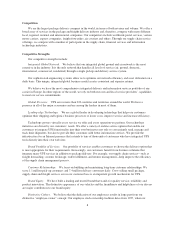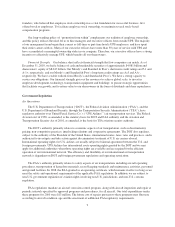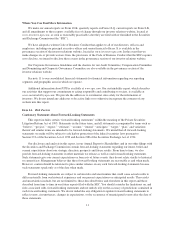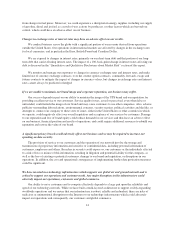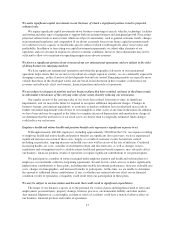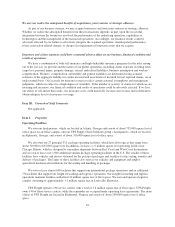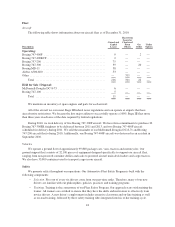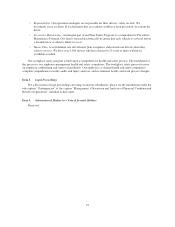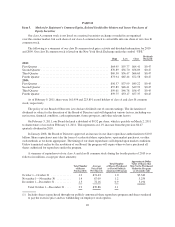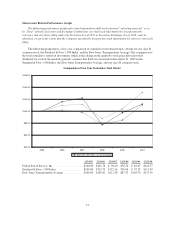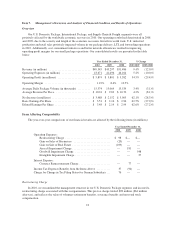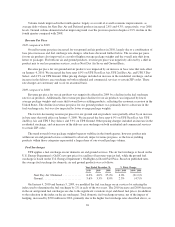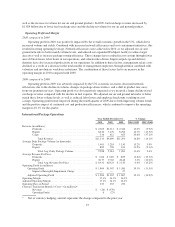UPS 2010 Annual Report Download - page 29
Download and view the complete annual report
Please find page 29 of the 2010 UPS annual report below. You can navigate through the pages in the report by either clicking on the pages listed below, or by using the keyword search tool below to find specific information within the annual report.Our aircraft are operated in a hub and spokes pattern in the U.S. Our principal air hub in the U.S., known as
Worldport®, is located in Louisville, Kentucky. The Worldport facility consists of over 5.2 million square feet
and the site includes approximately 596 acres. In 2009, we completed the first phase of our Worldport®
expansion, which increased the sorting capacity of the facility by 15%. The final phase of the Worldport®
expansion was completed in 2010, and increased the sorting capacity to approximately 416,000 packages per
hour. The expansion involved the addition of two aircraft load / unload wings to the hub building, followed by
the installation of high-speed conveyor and computer control systems. The total cost of the expansion was over
$1 billion.
We also have regional air hubs in Hartford, Connecticut; Ontario, California; Philadelphia, Pennsylvania;
and Rockford, Illinois. These hubs house facilities for the sorting, transfer and delivery of packages. Our
European air hub is located in Cologne, Germany, and we maintain Asia-Pacific air hubs in Shanghai, China;
Shenzhen, China; Taipei, Taiwan; Hong Kong; and Singapore. Our regional air hub in Canada is located in
Hamilton, Ontario, and our regional air hub for Latin America and the Caribbean is in Miami, Florida.
Over the past several years, UPS has made a successful transition to become the first wholly-owned foreign
express carrier in China. In 2008, we opened the UPS International Air Hub at Pudong International Airport,
which was built on a parcel totaling 2.4 million square feet with a planned sorting capacity of 17,000 packages
per hour. The new hub links all of China via Shanghai to UPS’s international network with direct service to the
Americas, Europe and Asia. It also connects points served in China by UPS through a dedicated service provided
by Yangtze River Express, a Chinese all-cargo airline.
In February 2010, we opened a new intra-Asia air hub at Shenzhen Baoan International Airport in China.
The Shenzhen facility replaced our intra-Asia air hub at Clark Air Force Base in the Philippines, and serves as
our primary transit hub in Asia. The facility was built on a parcel of almost 1 million square feet, and has a
sorting capacity of 18,000 packages per hour.
Our primary information technology operations are consolidated in a 435,000 square foot owned facility, the
Ramapo Ridge facility, which is located on a 39-acre site in Mahwah, New Jersey. We also own a 175,000
square foot facility located on a 25-acre site in Alpharetta, Georgia, which serves as a backup to the main
information technology operations facility in New Jersey. This facility provides production functions and backup
capacity in the event that a power outage or other disaster incapacitates the main data center. It also helps us to
meet our internal communication needs.
We believe that our facilities are adequate to support our current operations.
17



